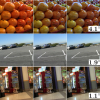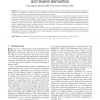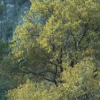10 search results - page 1 / 2 » Physics-based Edge Evaluation for Improved Color Constancy |
CVPR
2009
IEEE
14 years 11 months ago
2009
IEEE
Edge-based color constancy makes use of image derivatives
to estimate the illuminant. However, different edge
types exist in real-world images such as shadow, geometry,
material...
PAMI
2011
12 years 11 months ago
2011
—Existing color constancy methods are all based on specific assumptions such as the spatial and spectral characteristics of images. As a consequence, no algorithm can be conside...
ICCV
2007
IEEE
14 years 6 months ago
2007
IEEE
We propose to use high-level visual information to improve illuminant estimation. Several illuminant estimation approaches are applied to compute a set of possible illuminants. Fo...
CVPR
2008
IEEE
14 years 6 months ago
2008
IEEE
Computational color constancy is the task of estimating the true reflectances of visible surfaces in an image. In this paper we follow a line of research that assumes uniform illu...
ICCV
2007
IEEE
14 years 6 months ago
2007
IEEE
Kernel-based trackers aggregate image features within the support of a kernel (a mask) regardless of their spatial structure. These trackers spatially fit the kernel (usually in l...



